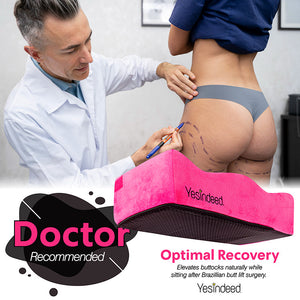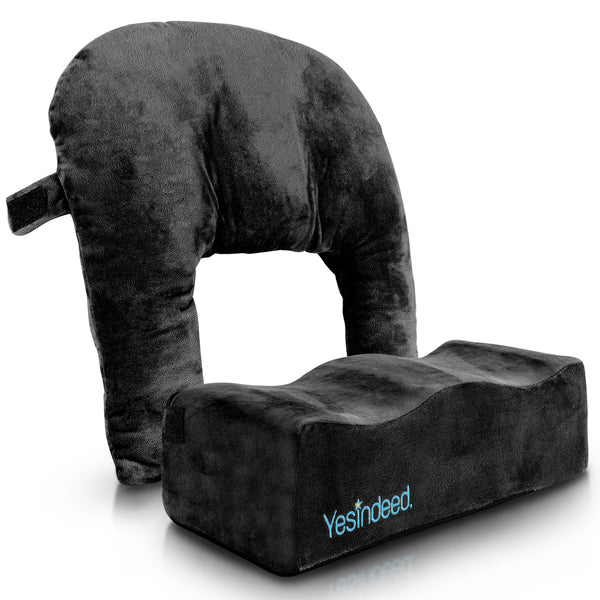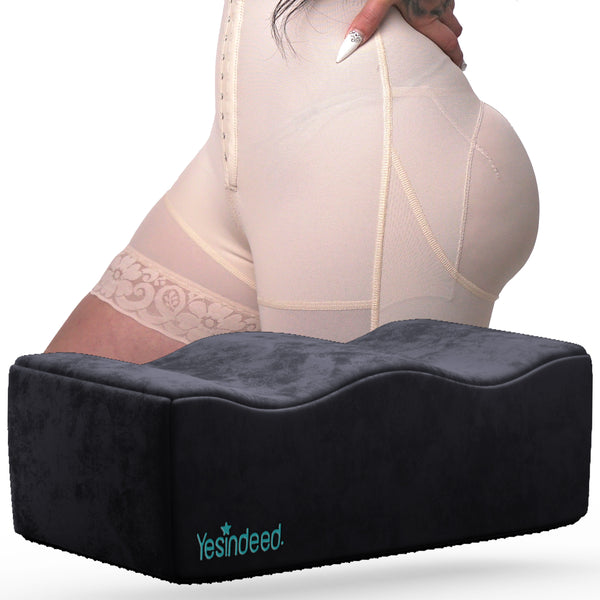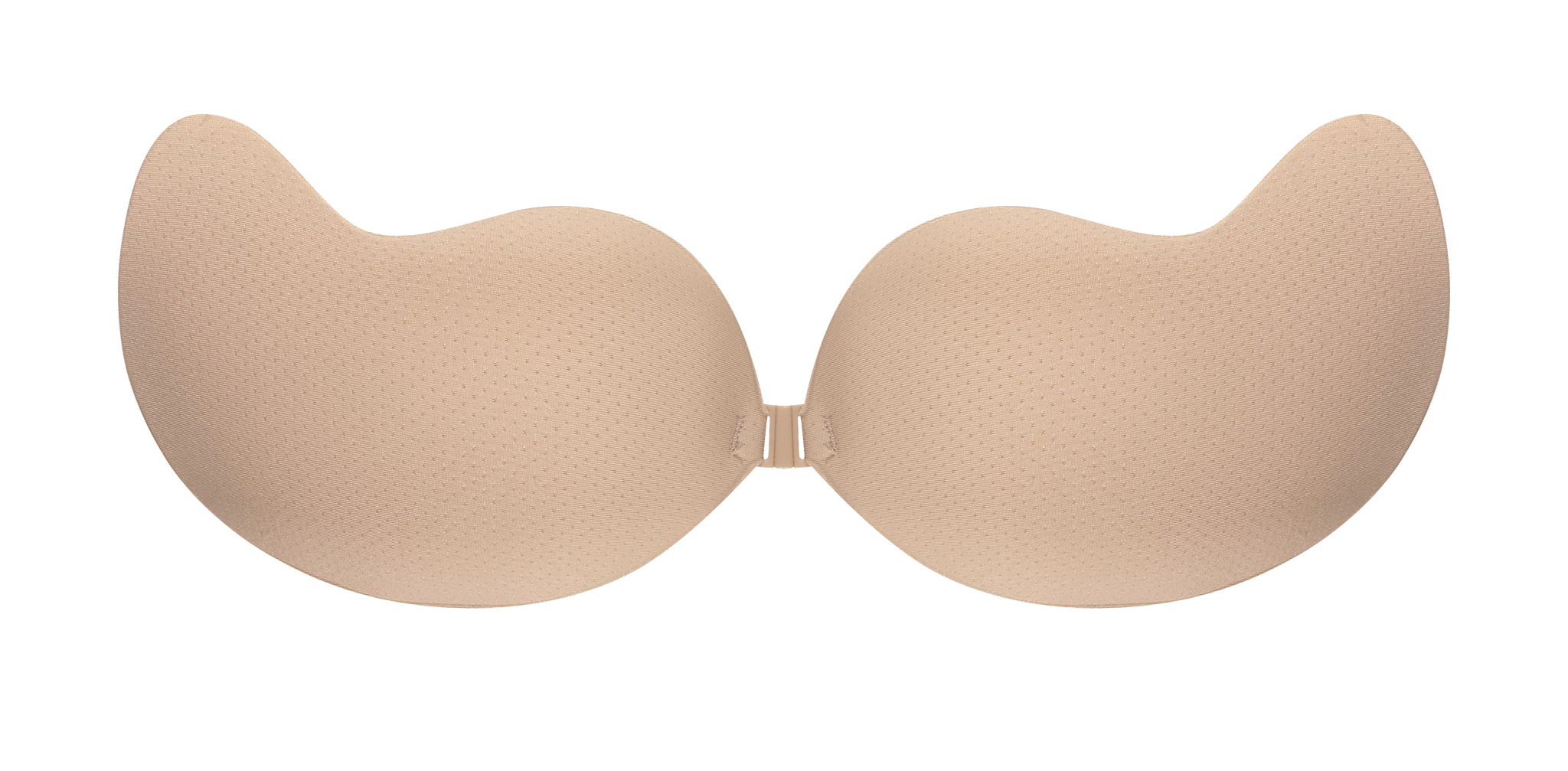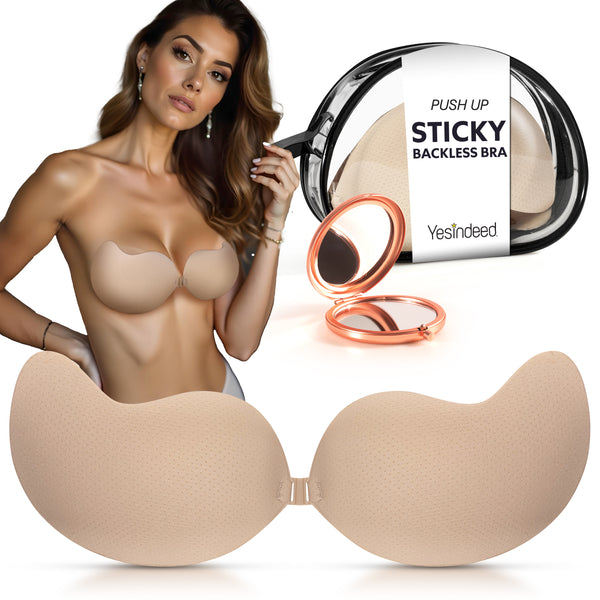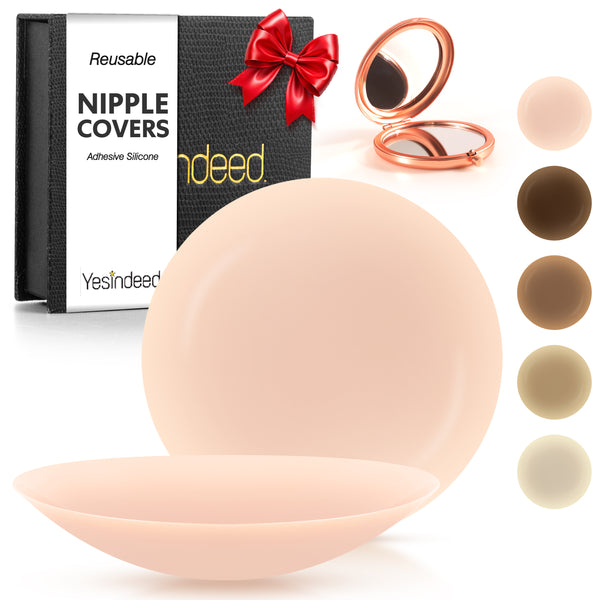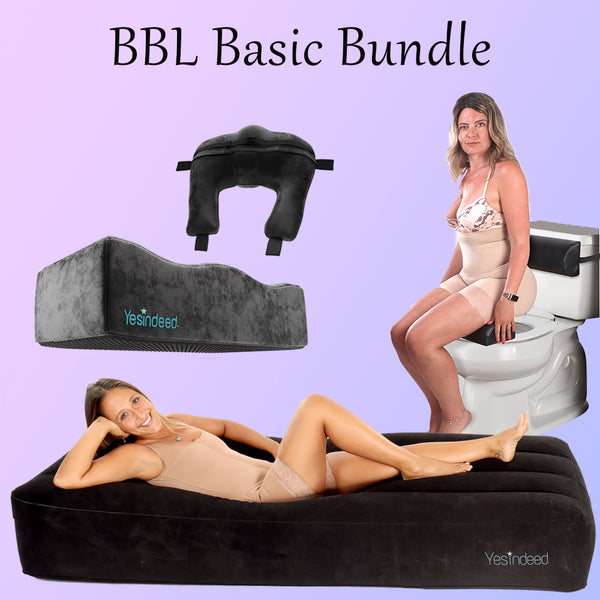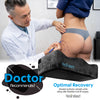When it comes to body sculpting, the world of cosmetic surgery offers a myriad of options. The question that often arises is, "Should I go for liposuction or opt for a tummy tuck?" Both are popular procedures offering transformative results, but with distinct purposes and outcomes. Journey with us as we delve into a side-by-side comparison of liposuction versus tummy tucks and help you determine which procedure aligns best with your aesthetic goals. Trust us; your dream body is closer than you think!
Liposuction removes excess fat from targeted areas using a suction device while tummy tuck involves removing excess skin and fat from the abdomen along with tightening the underlying muscles. Liposuction alone is recommended for patients with good skin tone and a flat abdominal wall, but tummy tuck is required for those with loose abdominal skin or a stretched abdominal wall. It's best to consult with a board-certified plastic surgeon who can recommend the most appropriate procedure based on individual needs and goals.
Understanding Liposuction And Tummy Tuck
When it comes to body contouring procedures, two popular options are liposuction and tummy tuck. While both aim to improve the appearance of the abdomen, they differ in their approach and target different concerns. Understanding the key differences between these procedures can help you determine which one is right for you.
Liposuction is a surgical procedure that removes excess fat deposits from specific areas of the body, including the abdomen, hips, waistline, thighs, and arms. It is recommended for individuals who have good skin tone, minimal loose skin or abdominal wall issues, and stubborn pockets of fat that are resistant to diet and exercise. In this procedure, small incisions are made in the targeted area, and a suction device called a cannula is used to remove the fatty tissue.
Imagine a scenario where an individual has been working hard to achieve their ideal body weight through regular exercise and a balanced diet. However, despite their efforts, they still struggle with excess fat in their abdominal area that just won't go away. In this case, liposuction could be an effective solution to remove those stubborn fat deposits and improve their overall body contour.
On the other hand, a tummy tuck (abdominoplasty) is recommended for individuals with loose abdominal skin or a stretched abdominal wall. This can occur as a result of pregnancy, significant weight loss, or natural aging processes. The procedure involves making an incision along the bikini line from hip to hip, lifting the skin and fat off the abdominal wall, removing excess skin, tightening the underlying abdominal muscles with sutures, and sometimes incorporating liposuction for comprehensive improvement in contour.
Now that we have a general understanding of liposuction and tummy tuck procedures let's take a closer look at what happens during a liposuction procedure.
The Liposuction Procedure

Liposuction is a tried and tested procedure known for its ability to effectively remove unwanted fat deposits, resulting in improved body proportions and contours. The procedure typically begins with the administration of anesthesia to ensure the patient's comfort throughout the surgery. Once the anesthesia has taken effect, small incisions are made in inconspicuous areas near the targeted fat deposits.
Through these incisions, a special fluid called tumescent solution is injected into the treatment area. This solution helps numb the area, minimize bleeding, and facilitate easier fat removal. Following this, a thin tube attached to a suction device called a cannula is carefully inserted through the incisions.
The surgeon then moves the cannula back and forth in a controlled manner to break up and suction out excess fat cells. The movements are precise and strategic, reshaping the treated area and creating more balanced body contours. After completing the desired fat removal, the incisions are closed with sutures or adhesive tapes, and appropriate dressings or compression garments may be applied to aid healing and optimize results.
Consider someone who struggles with disproportionate fat accumulation in their thighs that affects their confidence and self-esteem. Liposuction would involve making small incisions in the targeted areas of the thighs. Through these incisions, the surgeon inserts the cannula and gently suctions out excess fat cells, sculpting a more proportionate lower body appearance.
To summarize:
|
Liposuction |
Tummy Tuck |
|
Removes excess fat deposits |
Addresses loose abdominal skin and stretched abdominal muscles |
|
Targeted areas: abdomen, hips, waistline, thighs, arms |
Focuses on abdominal area |
|
Small incisions |
Bikini line incision from hip to hip |
|
Minimal scarring |
Longer recovery time |
|
Suitable for individuals with good skin tone and stubborn pockets of fat |
Suitable for individuals with loose abdominal skin or a stretched abdominal wall |
- Liposuction is a popular and proven procedure that can effectively remove stubborn fat deposits and improve body contours through small incisions and strategic movements of a cannula. It is a suitable option for individuals with good skin tone and local pockets of fat, while a tummy tuck may be recommended for those with loose abdominal skin or stretched abdominal muscles. Liposuction results in minimal scarring and a shorter recovery time compared to a tummy tuck.
The Tummy Tuck Procedure

The tummy tuck, also known as abdominoplasty, is a surgical procedure designed to remove excess skin and fat from the abdomen while tightening the underlying muscles. This procedure is recommended for individuals who have loose or sagging skin, stretched abdominal muscles, or a protruding belly caused by factors such as pregnancy, weight loss, or aging.
During a tummy tuck procedure, an incision is made along the bikini line from hip to hip. The length of the incision may vary depending on the extent of correction needed. Through this incision, the surgeon carefully lifts the skin and fat off the abdominal wall to gain access to the underlying tissue.
Once the excess skin has been removed, the surgeon sutures the abdominal muscles together, creating a tighter and more toned appearance. This step is particularly beneficial for individuals who have experienced muscle separation due to factors like pregnancy or significant weight gain.
After addressing the muscles, the surgeon drapes the remaining skin back over the abdomen and trims off any excess. The incisions are then closed with sutures or surgical staples, leaving a strategically placed scar that can typically be concealed within underwear or swimsuit bottoms.
It's important to note that a tummy tuck is not solely focused on fat removal but rather aims to improve both skin laxity and muscle tone in the abdominal area. This comprehensive approach makes it suitable for individuals with significant concerns in terms of loose skin and weakened abdominal muscles.
Although a tummy tuck can provide transformative results for those seeking a flatter and firmer abdomen, it is still considered major surgery. As with any surgical procedure, there are risks involved, including potential complications such as bleeding, infection, scarring issues, and adverse reactions to anesthesia. These risks should be thoroughly discussed with a board-certified plastic surgeon before making a decision.
Now that we have a solid understanding of the tummy tuck procedure, let's explore the different body areas that can be treated with liposuction and tummy tuck procedures.
Body Areas Treatable With Each Procedure
Liposuction and tummy tucks are both effective methods for improving body contour, but they target different areas. Liposuction is primarily focused on removing excess fat from specific regions of the body by suctioning it out through small incisions. Common areas for liposuction include the abdomen, hips, waistline, outer and inner thighs, and arms.
On the other hand, a tummy tuck is specifically designed to address concerns in the abdominal area. It is particularly beneficial for individuals who have loose or sagging skin, stretched abdominal muscles, or excess fat in the lower abdomen. While liposuction can be used as part of a tummy tuck procedure to further enhance results, it is important to note that a tummy tuck provides more comprehensive improvement in abdominal contour by addressing both excess skin and fat as well as muscle laxity.
It's worth noting that the decision between liposuction and a tummy tuck depends on individual circumstances and desired outcomes. If you have good skin tone, minimal excess skin, and stubborn pockets of fat, liposuction alone may be a suitable option. However, if you have loose abdominal skin or a stretched abdominal wall due to factors like pregnancy or significant weight loss, a tummy tuck is likely to provide more optimal results.
For instance, imagine someone who has lost a substantial amount of weight but is left with loose skin in the abdominal area. Liposuction alone wouldn't effectively address this concern as it primarily focuses on fat removal. A tummy tuck would be more appropriate as it not only removes excess skin but also tightens weak or separated abdominal muscles for a flatter and firmer stomach.
While liposuction offers the advantage of minimal scarring and shorter recovery time compared to a tummy tuck, it is important to weigh the potential benefits and risks based on individual anatomy and desired outcomes. Consulting with a board-certified plastic surgeon who specializes in body contouring procedures can provide valuable guidance on which procedure is most suitable for your unique situation.
Now that we have explored the different areas treatable with each procedure, let's move forward to compare other aspects of liposuction and tummy tuck procedures such as scarring, recovery time, and candidacy.
Liposuction Treatment Areas

Liposuction is a popular cosmetic procedure that targets specific areas of excess fat to improve body contour and achieve a more sculpted appearance. One advantage of liposuction is its versatility, as it can be performed on various areas of the body. Let's explore some common treatment areas for liposuction:
- Abdomen: The abdominal area, including the upper and lower abdomen, is one of the most frequently treated areas with liposuction. It helps remove stubborn fat deposits and create a flatter and more defined stomach.
For instance, imagine someone who has been diligently working out but struggles to get rid of those last few pockets of fat around their belly. Liposuction can effectively target these localized fat deposits, enhancing the overall shape and contour of the abdomen.
- Hips and Waistline: Many individuals desire a slimmer waistline and smoother hip contours. Liposuction can be used to address love handles or excess fat around the hips, providing a more proportionate figure.
|
Treatment Area |
Description |
|
Abdomen |
Targeting both upper and lower abdomen for enhanced contour. |
|
Hips and Waistline |
Addressing excess fat around the hips and providing a slimmer waistline. |
|
Outer and Inner Thighs |
Removing stubborn fat deposits from the thighs for improved leg shape. |
|
Arms |
Reducing unwanted fat in the upper arms for more toned appearance. |
- Outer and Inner Thighs: Liposuction in this area can help reduce bulkiness or disproportionate fat distribution in the thighs. This procedure aims to enhance leg shape and create a leaner silhouette.
- Arms: Some individuals may have excess fat deposits in their upper arms that make them feel self-conscious about wearing sleeveless clothes. Liposuction can remove this unwanted fat and provide a more toned appearance.
These are just a few examples of the many treatment areas that liposuction can target. It is important to remember that the eligibility for liposuction depends on various factors, including the amount of excess fat, skin elasticity, and overall health. A board-certified plastic surgeon specializing in body contouring can determine which treatment areas are most suitable for you during a personalized consultation.
Now that we've explored the treatment areas for liposuction, let's move on to discussing the treatment areas for a tummy tuck, also known as abdominoplasty.
Tummy Tuck Treatment Areas

A tummy tuck is a surgical procedure designed to remove excess skin and fat from the abdomen while tightening the abdominal muscles. This comprehensive approach results in a flatter and more contoured midsection. The treatment areas of a tummy tuck typically include:
- Lower Abdomen: The lower abdomen is where many individuals struggle with loose or sagging skin due to factors such as pregnancy, weight loss, or natural aging. A tummy tuck can address this concern by removing the excess skin and tightening the underlying muscles.
- Upper Abdomen: Some people may experience laxity in both the upper and lower abdomen regions. In such cases, a full tummy tuck is performed to address both areas simultaneously for optimal results.
- Belly Button Area: During a tummy tuck procedure, the belly button is often repositioned to ensure proper alignment with the tightened abdomen. This enhances the overall aesthetic outcome of the surgery.
For example, imagine someone who has undergone significant weight loss but is left with loose skin around their midsection. A tummy tuck can help reshape their abdomen by eliminating this excess skin and giving them a more toned appearance.
Remember, each person's body is unique, and the specific treatment areas for a tummy tuck will depend on individual needs and goals. It is crucial to consult with a board-certified plastic surgeon specializing in body contouring procedures to determine which treatment areas are most appropriate for you.
Comparing Liposuction And Tummy Tuck
When considering body contouring procedures, two popular options that often come to mind are liposuction and tummy tuck. While both procedures aim to enhance body contours and slim the waistline, they differ in their specific focus and techniques.
Liposuction is primarily focused on reducing areas of excess fat by suctioning it out through small incisions. It can be performed on various parts of the body, such as the abdomen, hips, thighs, arms, or neck. Liposuction is a versatile procedure that can target stubborn fat deposits that are resistant to diet and exercise. It can result in a more sculpted appearance and improved body proportions.
On the other hand, a tummy tuck, also known as abdominoplasty, is specifically intended to improve the aesthetic appearance of the abdominal region by removing excess skin and tightening underlying musculature. This procedure is commonly chosen by individuals who have lost a significant amount of weight or mothers looking to regain their pre-pregnancy figure. In addition to removing loose or excess abdominal skin, a tummy tuck also involves repairing stretched or torn abdominal muscles, achieving a smoother and slimmer abdomen and waistline, reducing the appearance of stretch marks, correcting umbilical hernias, improving clothing fit, and enhancing the figure in swimwear.
It's important to note that liposuction is not suitable for individuals with significant skin laxity or muscle separation. In such cases, a tummy tuck would be recommended for optimal results. However, liposuction may be an option for those with good skin elasticity and localized fat deposits.
For instance, let's say you have been successful in losing weight but are left with loose skin and weakened abdominal muscles. In this scenario, a tummy tuck would be the appropriate choice as it addresses these specific concerns. On the other hand, if you are already at or near your target weight with good skin elasticity and primarily concerned about stubborn fat pockets in the abdomen, liposuction may be the ideal solution.
When deciding between liposuction and a tummy tuck, it's crucial to consult with a board-certified plastic surgeon who can thoroughly evaluate your anatomy and goals. They will guide you in choosing the procedure that best suits your needs.
Now that we have compared liposuction and tummy tuck procedures, let's delve into the results and costs associated with each option.
Procedure Results And Costs
Understanding the expected results and associated costs is an essential factor when considering liposuction or a tummy tuck. Let's explore what each procedure offers in terms of outcomes and financial considerations.
Liposuction primarily focuses on fat reduction and body contouring. Following the procedure, patients can expect a slimmer appearance in the treated areas as excess fat is removed. However, it's important to keep in mind that liposuction is not intended for significant weight loss but rather for enhancing body proportions and targeting specific problem areas.
A tummy tuck, on the other hand, provides comprehensive improvement to the abdominal region. In addition to removing excess skin and fat, it also addresses muscle separation or weakness, resulting in a more toned and defined abdomen. The extent of improvement varies based on factors such as individual anatomy, laxity of tissues, and surgical technique employed by the surgeon.
When it comes to costs, it's important to understand that they can vary depending on various factors such as geographical location, surgeon expertise, facility fees, anesthesia fees, post-operative care, and any additional procedures performed. Generally, a full abdominoplasty can range from $11,700 to $13,300. It should be noted that additional costs may apply if combining with liposuction or other procedures.
For example, if you're mainly concerned about excess fat in the abdomen and opt for liposuction alone, the cost may be lower compared to a tummy tuck which involves more extensive surgery. However, it's crucial not to base your decision solely on costs but rather consider the expected outcomes and how they align with your goals.
Financing options may be available to help make these procedures more accessible. Consulting with your plastic surgeon can provide clarity on the expected costs specific to your circumstances.
Now that we have explored the procedure results and costs associated with liposuction and tummy tuck, let's move on to other important factors to consider when choosing between these two options.
Factors To Consider In Choosing Between Liposuction And Tummy Tuck
When deciding between liposuction and a tummy tuck, it's important to consider several factors that will determine which procedure is right for you. Each option targets different concerns and provides distinct results. By evaluating these factors, you can make an informed decision that aligns with your goals and expectations.
- Skin Elasticity and Muscle Tone
The first factor to consider is the condition of your skin elasticity and muscle tone. Liposuction is recommended for patients with excess fat or stubborn pockets of fat, good skin tone, and a flat abdominal wall. It involves making small incisions in the skin and suctioning away fatty tissue between the skin and abdominal wall. Common areas for liposuction include the abdomen, hips, waistline, outer and inner thighs, and arms. The advantages of liposuction include minimal scarring and short downtime. However, if there is loose abdominal skin or a stretched abdominal wall, liposuction alone may not be sufficient.
On the other hand, a tummy tuck (abdominoplasty) is required for patients with loose abdominal skin or a stretched abdominal wall. It involves making an incision at the bikini line from hip to hip, lifting the skin and fat off the abdominal wall, removing excess skin, tightening the abdominal wall with stitches, and optionally performing liposuction for comprehensive improvement in contour. A tummy tuck addresses both excess skin and fat as well as tightens the underlying muscles.
- Individual Body Goals
Another crucial factor to consider is your individual body goals. If your primary concern is to remove localized excess fat deposits in specific areas while maintaining good skin quality and muscle tone, then liposuction may be the more suitable option for you. Liposuction allows targeted fat removal, sculpting your body contours without addressing loose skin or muscle laxity.
However, if your goal is to achieve a firmer and flatter abdomen with a significant reduction in excess skin and improved muscle tone, then a tummy tuck may better fulfill those aspirations. By combining skin removal, fat reduction, and muscle tightening, a tummy tuck can provide a more comprehensive transformation.
- Recovery Time And Downtime
Recovery time and downtime are essential considerations when choosing between liposuction and a tummy tuck. Liposuction is generally less invasive than a tummy tuck, resulting in shorter recovery periods. Most liposuction patients experience minor bruising, swelling, and discomfort that fade within a few weeks. They can typically resume their daily activities within days or weeks after the procedure.
In contrast, the recovery period for a tummy tuck is longer due to the extent of the surgery. It often requires several weeks of rest and abstaining from strenuous activities to allow proper healing of incisions and the abdominal wall. However, the long-term results of a tummy tuck can be transformative for individuals seeking significant improvement in their abdominal contour.
**** Imagine Sarah, a 35-year-old who has recently lost over 50 pounds through diet and exercise but is left with loose abdominal skin and weakened abdominal muscles due to her previous pregnancy. She desires a firmer stomach with improved muscle tone. After consulting with a board-certified plastic surgeon specializing in aesthetic plastic surgery including body contouring procedures, Sarah decides that a tummy tuck is the best option for her as it addresses her specific concerns while providing long-lasting results.
Understanding these factors can help you make an informed decision about whether liposuction or a tummy tuck is the right choice for you. However, it's crucial to consult with an experienced plastic surgeon specializing in body contouring procedures to evaluate your unique situation and recommend the most appropriate treatment plan.
- According to the American Society of Plastic Surgeons, over 270,000 liposuction procedures were performed in the United States in 2020, making it the third most popular cosmetic surgical procedure.
- The same source reports that in the same year, more than 97,000 tummy tucks were carried out in the country, ranking it as the fifth most popular cosmetic surgical procedure.
- A study published in 2019 found that patient satisfaction rates after both procedures were high. For tummy tuck patients, satisfaction ranged from 97% to 99%. For liposuction patients, it was approximately at 80% to 85%.
What Are The Risks Associated With Each Procedure, And How Do They Compare To One Another?
Both liposuction and tummy tuck procedures carry risks, but they differ in their specific complications. Liposuction risks may include infection, bleeding, contour irregularities, and skin numbness. On the other hand, tummy tucks have risks such as blood clots, hematoma, and longer recovery time. It's crucial to consult with a qualified plastic surgeon to assess your individual needs and discuss the potential risks and benefits of each procedure.
Is It Better To Have Liposuction Or A Tummy Tuck If You Have Loose Skin In Addition To Excess Fat?
In most cases, when loose skin is present in addition to excess fat, a tummy tuck (abdominoplasty) is the better option compared to liposuction. While liposuction primarily targets fat removal, a tummy tuck involves removing excess skin and tightening the abdominal muscles, providing more dramatic results for those with significant skin laxity. According to a study published in Plastic and Reconstructive Surgery, 85% of patients who underwent abdominoplasty reported improved satisfaction with their abdominal contour. However, it is crucial to consult with a qualified plastic surgeon to evaluate your specific needs and determine the most suitable procedure for you.
Which Procedure Is Better For Achieving A More Toned And Contoured Stomach?
It's all about your individual goals and body type. Liposuction is ideal for removing stubborn pockets of fat and creating a slimmer silhouette, while a tummy tuck excels in tightening loose abdominal muscles and removing excess skin. According to a study by the American Society of Plastic Surgeons, both procedures have high patient satisfaction rates (85% for liposuction and 94% for tummy tucks), emphasizing the importance of consulting with a skilled plastic surgeon to determine the best approach for achieving your desired toned and contoured stomach.
Are Both Procedures Equally Effective For Removing Excess Fat From The Abdominal Area?
No, both procedures are not equally effective for removing excess fat from the abdominal area. Liposuction is primarily intended for fat removal, targeting small to moderate amounts of excess fat. Tummy tuck, or abdominoplasty, on the other hand, addresses both excess fat and loose skin, providing a more comprehensive solution for individuals with significant skin laxity or muscle separation. While liposuction can yield noticeable results in terms of fat reduction, it does not address other concerns like sagging skin or muscle tone. According to a study published in Plastic and Reconstructive Surgery journal, tummy tuck surgeries resulted in higher patient satisfaction rates compared to liposuction alone. So, the choice between the two procedures ultimately depends on an individual's specific needs and aesthetic goals.
What Is The Typical Recovery Time For Liposuction Versus A Tummy Tuck?
The typical recovery time for liposuction is usually shorter than a tummy tuck. Liposuction usually requires minimal downtime and patients can return to their normal activities within a few days to a week. On the other hand, tummy tuck procedures involve more extensive tissue removal and muscle repair, resulting in a longer recovery period of around two to three weeks. However, it's important to note that individual recovery times may vary depending on factors such as the patient's overall health, the extent of the procedure, and adherence to post-operative care instructions.









